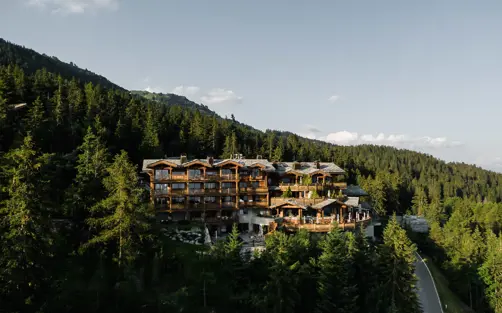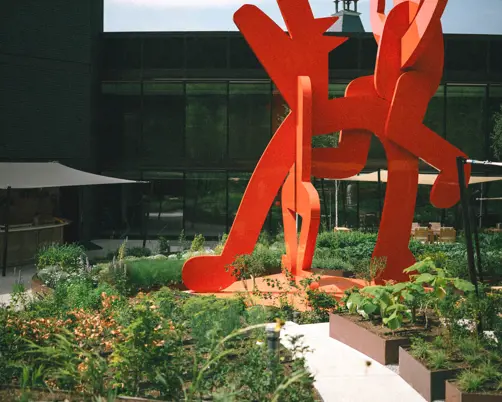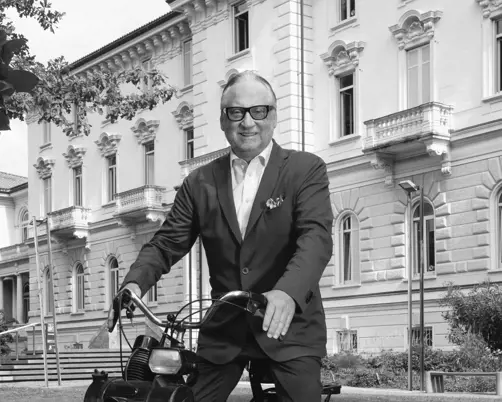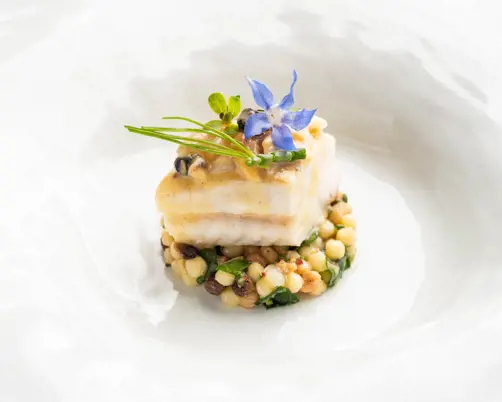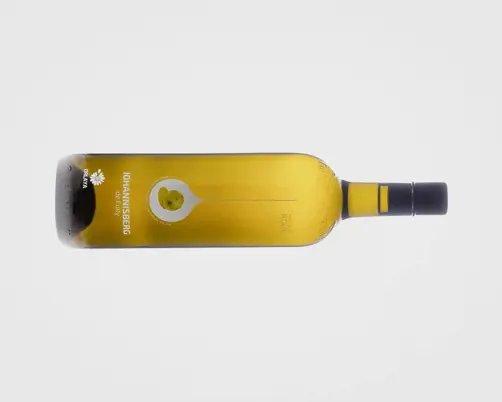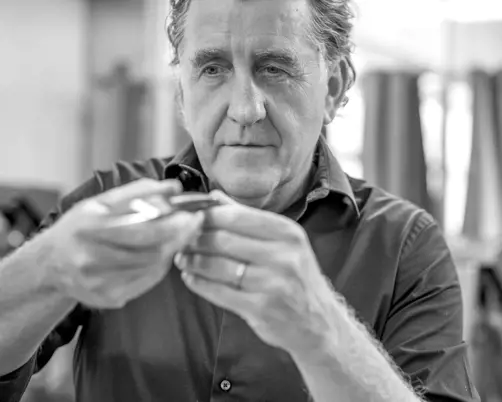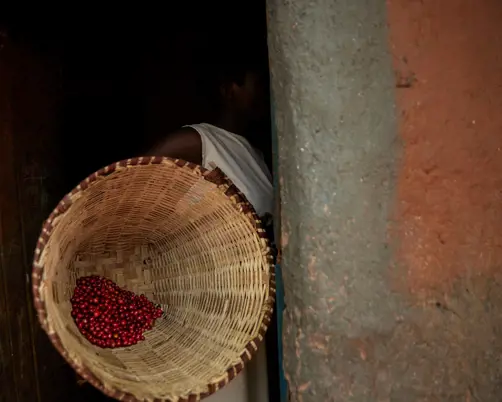Born to cook
At the age of just four, Yannick Crepaux had already prepared a dessert with oranges all on his own. Today he cooks in the Valais mountains at the very highest level – and he loves to give his dishes a hint of freshness by adding citrus fruits.

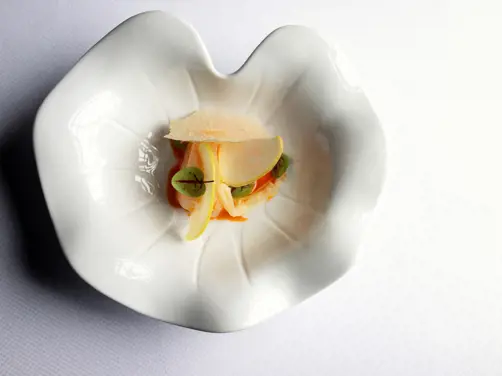
At the start of our meeting, Yannick Crepaux apologises: he’s never entirely comfortable in interviews because he doesn’t like to be the centre of attention. Given the choice, he would much rather be at work in his kitchen. An hour and a half later, we’re still talking, and not a single second of that time has been boring. The head chef at LeMontBlanc restaurant in Hotel LeCrans in Crans-Montana isn’t just an excellent chef with a flair for lively, elegant dishes; he’s also a very pleasant man to chat to.
Once he has overcome his initial shyness, his eyes light up as he speaks of his love for good food and recalls memories from his childhood: ‘When I was four-and-a-half years old,’ he says, ‘I prepared a dish all on my own for the first time: the classic dessert orange givrée, for which you have to scoop out an orange and then fill it with orange sorbet. Even before then, I was always at my mum’s or my grandma’s side in the kitchen, and even though it was very rare, I did not like it when they served food from a tin.’
It was always clear to him that he would become a chef, and if asked today to name an alternative profession he could have gone into, he wouldn’t have an answer. ‘To be completely honest, I just don’t know. There is nothing I enjoy as much as working with good-quality products, searching for interesting flavour combinations and carefully cooking my recipes.’ Yannick Crepaux has now been working at LeCrans for 20 years – for the first 17, he was the right-hand man of Pierre Crepaud, and on Pierre’s departure he became head chef himself.
What has changed since he took over? ‘The biggest difference is probably that I tend to add an Asian touch more often and that I love working with spices,’ Crepaux explains. ‘Of course extremely hot dishes would be out of place in a fine dining restaurant like LeMontBlanc, but there’s nothing wrong with a little tingle on the tongue. Used sparingly, Tasmanian pepper is a wonderful thing, for example. In addition to its spicy taste, it also has sweet and fruity notes – it’s just great! And then there’s Espelette pepper, a variety of chilli from the Basque region of France that isn’t especially hot but is very aromatic, fruity and slightly smoky.’

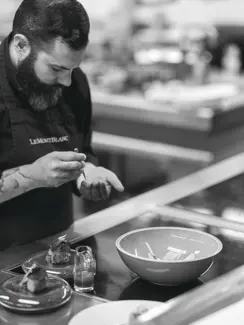
Alongside spice, another factor that is very important to Yannick Crepaux when composing his dishes is freshness. An example is his breast of veal, which he simmers in miso for eight hours and seasons with lemon grass and leaves of kaffir lime. If you think stewed dishes are dull, you haven’t tried Crepaux’s creations yet. The fresh touch in his complex and vibrant dishes usually stems from citrus fruits – they are the absolute favourite of this culinary artist from near Paris. ‘Citrus fruits breathe life into a dish – they lift white meat to another level just as effectively as fish and shellfish,’ he says. Whereas at home we normally just sprinkle a few drops of lemon on our fish, LeMontBlanc head chef Crepaux serves a lemon, tarragon and raspberry sorbet to go with his fillet of zander spiced with Indian vadouvan. After all, if you were already making orange givrée yourself as a four-year-old, your culinary career is likely to be much more virtuosic than that of the average home cook.
“There is nothing I enjoy as much as working with good-quality products, searching for interesting flavour combinations and carefully cooking my recipes.”
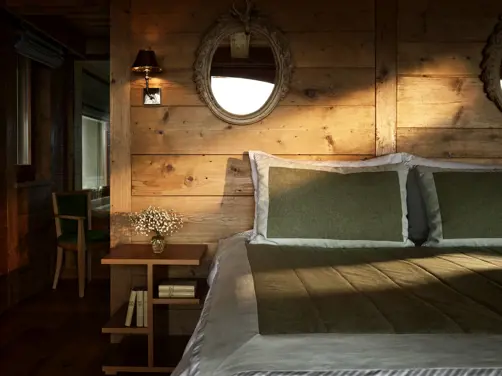
Yannick Crepaux’s love of citrus fruits and Asian flavours is matched by his interest in all the things there are to discover in and around his adopted Valais home town. ‘In spring, summer and autumn, the selection is fantastic, featuring apricots, berries, mushrooms and herbs. Naturally, my options are a little limited in the winter, but I’m still able to fall back on some outstanding cheeses and top-class dried meat,’ he says. Stéphane Robyr, Crepaux’s go-to man when it comes to cheese, lives at Alp Corbyère, less than half a kilometre from the hotel. Alongside raclette cheese – which, like other preparation methods, is smoked in the LeCrans kitchen – one of Robyr’s specialities is Sérac. ‘Sérac is based on the whey of raw cow’s or goat’s milk. It has a very light, soft curd and can be put to a wide variety of uses,’ Crepaux adds. ‘Whey cheese works just as well as a filling for ravioli as it does as an accompaniment to char.’ The LeMontBlanc head chef also sources his meat from a local provider – Boucherie du Rawyl in the heart of Crans-Montana. Yannick Crepaux’s philosophy: be open-minded and buy local whenever you can.

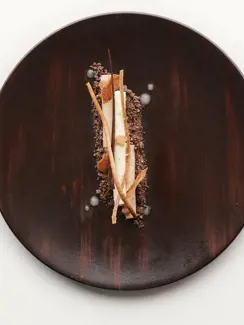
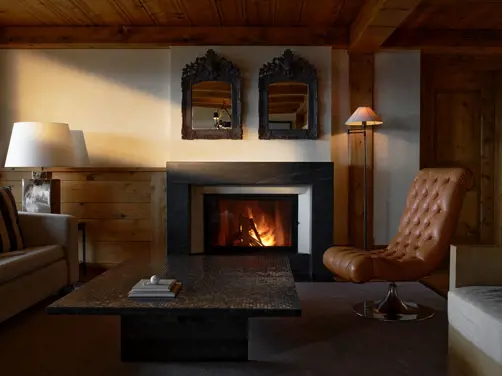
Crepaux is particularly happy when children come to his restaurant and, rather than choosing from the kids’ menu, want to eat one of the Michelin-starred grown-ups’ dishes. ‘They remind me of myself,’ he explains. ‘I was crazy about good food even as a young boy and was very interested to see what the ambitious chefs were cooking. There was one incident at a wedding that I can remember well. I was 12 years old and was supposed to be given the children’s menu, like the other kids of my age. This really annoyed me, so I kept on protesting until I was allowed to eat what the adults got.’ One of the regular guests at LeMontBlanc, Crepaux continues, is an 11-year-old boy who has been coming to the restaurant with his parents for seven years and is full of culinary curiosity. ‘He tries everything and has now developed an impressive sense of taste!’ Perhaps the boy will also one day become a Michelin-starred chef like Yannick Crepaux.
Words Alex Kuehn
Photos Nico schaerer
